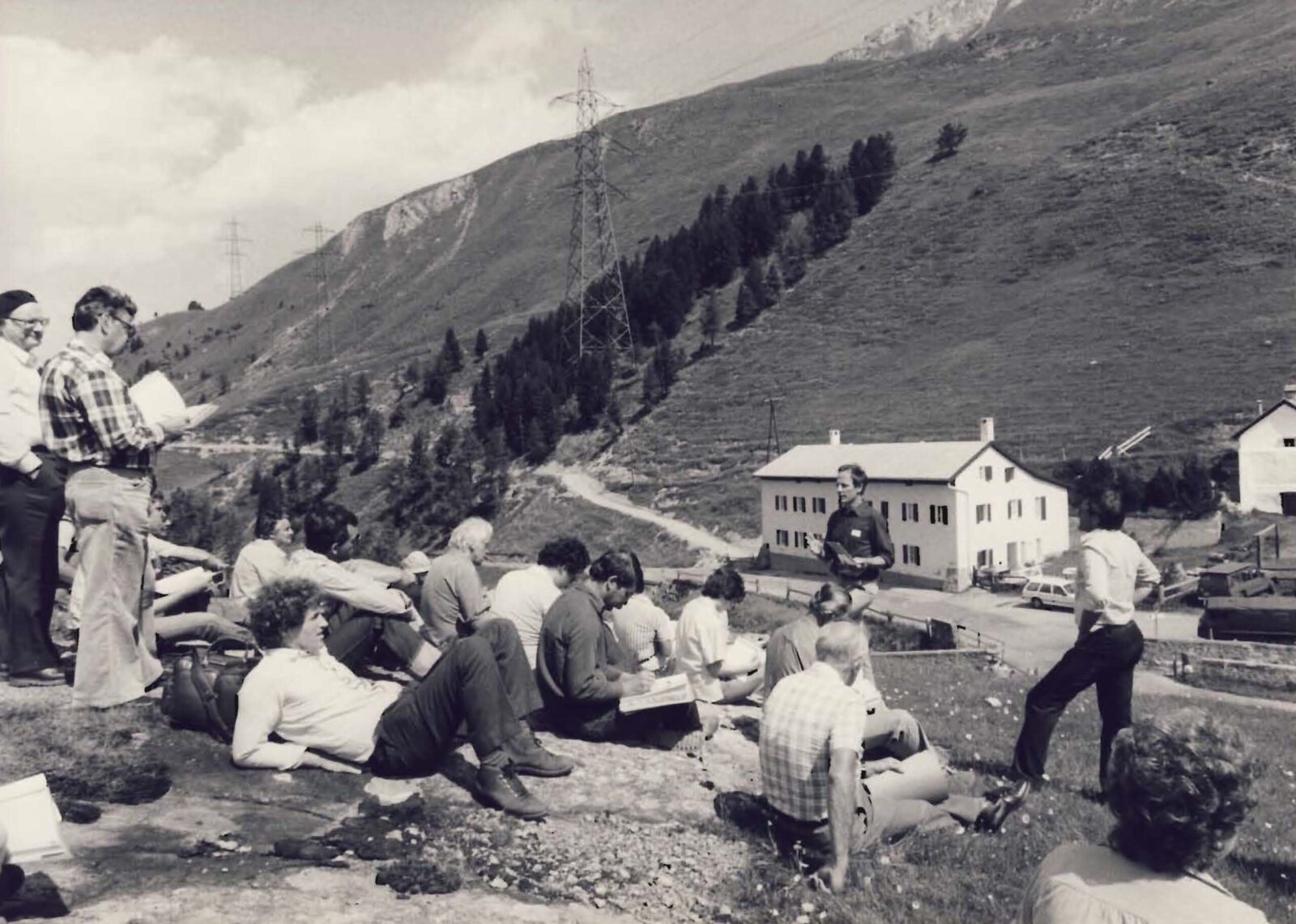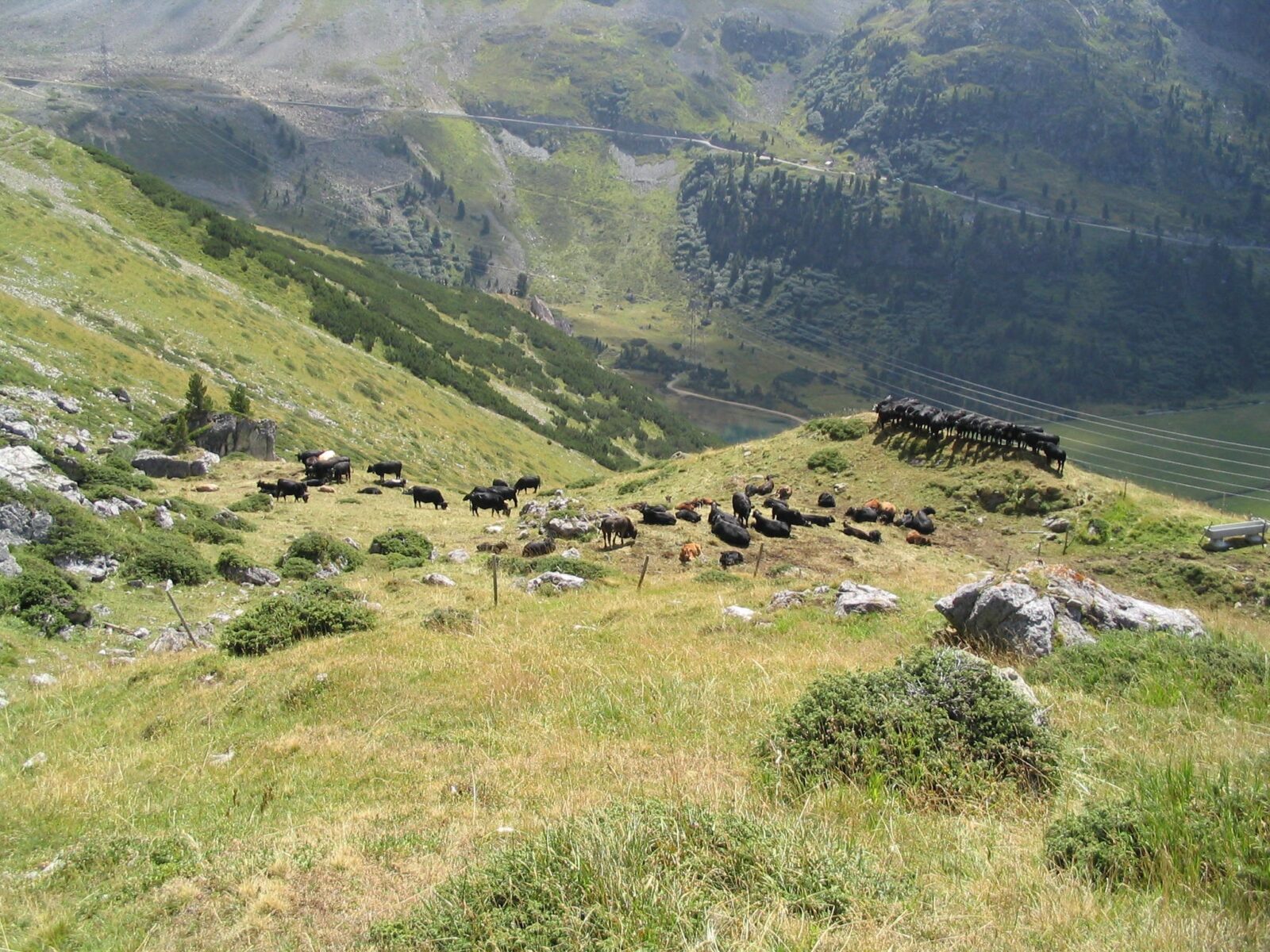Weissenstein Alp
From a horse-changing station to a state-of-the-art research platform
Instead of Horse-drawn carriages, researchers from ETH Zurich now go in and out of the Weissenstein Alp at the foot of the Albula Pass. Studies on botanical diversity, sustainable livestock systems, carbon sinks and greenhouse gas emissions are now shaping what happens on the Alpine pasture. That was different 45 years ago when ETH acquired the Alp Weissenstein.

The Alpine pasture was first mentioned in 1645 and was then an important stage station and inn until the opening of the Albula tunnel in 1903. In 1942, the later owner, Christian Caflisch, started ploughing as part of the increase in self-sufficiency (cultivation battle). In 1967, the Alpine pasture was finally acquired by ETH.
The start of research after the purchase by ETH came with a few difficulties: in order to increase the productivity of the Alpine areas, the idea came up to fertilise them artificially. Because of the difficult topography, this was to be done by small aircraft (an approach that would be unthinkable today, but was due to the strong self-sufficiency and progressive thinking of the time) – so the new construction of the power line did not fit into the concept at all. This was therefore not built along the slope, but in the middle of the valley and thus directly above the residential building of the Alpine pasture. Laying it would be very expensive today, so in the end it was cheaper to shield the building with copper.
Do high-performance cows fit on the Alpine pasture?
The Nebelspalter wrote satirically about this in 1982: “Something is happening in the federal Braunvieh cattle sector. According to credible information from federal stables, it is said that a new Swiss cattle variety has been successfully bred, which is characterised by high resistance, emotional frugality and enormous weather resistance. Recent high-altitude tests seem to have been surprisingly successful.” Yes, the high-yield cow at that time really didn’t get sick on the Alpine pasture. And: Braunvieh cattle is indeed particularly suited to high altitudes, as Professor Bianca has also found out in negative pressure chambers. The aim at that time was to export Braunvieh cattle to the high Andes. There is a lot of Braunvieh cattle there now, but the USA as a “semen supplier” is much closer than Switzerland.
Special challenges
Students on the Alpine excursion usually have a short night after the journey and underestimate the effort on the following day. Signs on the hiking trail across the Alpine area with the inscription “Suckler cows protect their calves” do not stop hikers with dogs, nor do they prevent their nasty insults and even threats. The only solution was to relocate the hiking trail. Large predators could threaten the valuable test animals. Researchers are therefore suspicious of how far away the bear and wolf are. And more frequent summer heat in the mountains also gets to the animals, so they seek out wind-exposed spots to cool down.
